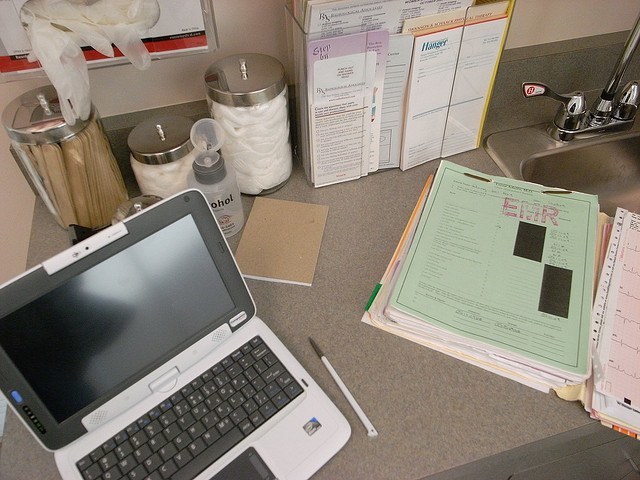
Meaningful Use Stage 3 faces a potentially uncertain future in 2016 and 2017, according to predictions from healthcare industry alliance DirectTrust. The nonprofit alliance states that MU program has alienated almost the entire provider community by overreaching for the final, Stage 3 version of its regulations.
Additionally, providers are particularly worried because the requirements of Stage 3 MU do not align well with MIPS and MACRA, the new rules under which Medicare will pay for value and performance, rather than for volume of care. DirectTrust did not predict exactly how the demise of MU Stage 3 will happen, but suggested may occur as a result of massive defections by providers willing to face fee schedule penalties rather than spend more resources on health IT that doesn’t add value to their practices and hospitals. Or, it may happen as a result of Congressional action, or because CMS and ONC see the hand-writing on the wall and scale down and bow out gracefully.
In addition to the demise of MU Stage 3, DirectTrust identified five other predictions for interoperable electronic exchange of health information in 2106:
1. Patients and consumers will become participants in the electronic exchange of health data.
Patients will have greater access to their clinical records, and they will be able to more freely and easily move those records whenever and to whomever they choose. Health care consumers will take as their right control of their own health information in much greater numbers. The corresponding willingness of provider organizations to permit this patient engagement—and to view it as positive and productive to attaining better health outcomes—will also become more evident across the U.S.
2. ‘Freed’ health data will drive yet-to-be imagined enrichments in personal and professional uses.
Electronic access to personal health information by patients and consumers will “free” the data from its confines within all kinds of health-related databases, including those in EHRs, health insurance companies, health departments, formal information exchanges (HIEs and HINs), pharmacies, pharmaceutical and e-prescribing systems, research programs, and so on. We’ll see the development of patient-facing applications that enable patients and consumers to take advantage of the ‘big data’ aspects of this new freedom to ‘mash up’ content from multiple locations and services, creating yet-to-be-imagined enrichments in both personal and professional uses. This will not happen linearly; rather it will grow explosively, and then suffer hiccups and setbacks as the privacy and security risks of such systems are first exposed, and then dealt with. But it is going to happen.
3. Federal and state agencies will move toward greater interoperability.
Those agencies that own and operate care delivery facilities and seek secure, interoperable means of sharing patient data with private sector providers will be on the frontline of greater interoperability. The Veterans Health Administration—which alone operates more than 1,000 outpatient clinics and dozens of large inpatient facilities—along with the Department of Defense, state Health Departments, Indian Health Service, and federally qualified health centers will increasingly replace fax, mail, and paper transport of vital health information with Direct exchange and other secure, vendor-neutral means of electronic exchange. At the same time, federal and state agencies that have administrative needs to move personal health information—including Medicare, the state Medicaid Agencies, the US Postal Service, to name a few—will take advantage of the providers’ capabilities to use electronic data exchange through their EHRs, and replace fax and mail accordingly.
4. Security, privacy, and identity will rule.
The cost of data breaches in health care is simply too high to be tolerated. As use of electronic health information exchange soars, we will experience a corresponding rise in concern about and actions taken to mitigate the risks of exposure of both data at rest and data in transit. Parties involved in electronic data exchanges will insist on more and more rigorous certification, accreditation, and audit of security and identity controls as a first condition of participating in data sharing. This will include requirements for the placement and routine testing of intrusion detection and protection systems. Two-factor authentication (sign-on) to medical records systems, like EHRs and PHRs, will be routinely offered, and will become required by the end of 2016 in many systems. Awareness of identity in cyberspace risks will become a conscious concern for everyone in health care.
5. Reliance on Direct exchange for secure, interoperable transfers of patient health information between and among providers for the purposes of care coordination will continue to grow.
The drivers of secure health information exchange include Meaningful Use, but are beginning to expand to other use cases, most notably assuring that geographically-separated members of health care teams have access to clinical patient summaries. Value-based purchasing arrangements will increasingly make fax and mail communications between providers obsolete, because coordination of care must be close to “real time.” In those communities (the majority) where care is delivered in a multi-vendor environment, secure EHR-to-EHR exchanges will be predominantly carried via the Direct Protocol.
12/11 Update: DirectTrust has revisited its POV on the future of Meaningful Use, based on subsequent conversations with those within the company and those outside who have presented a strong case for revisiting our prediction.

